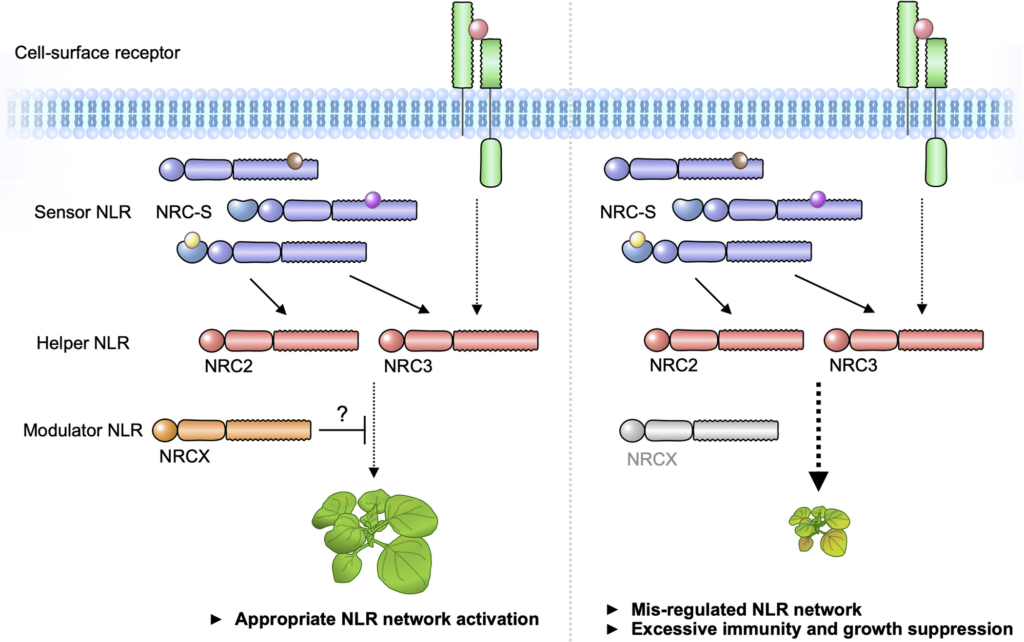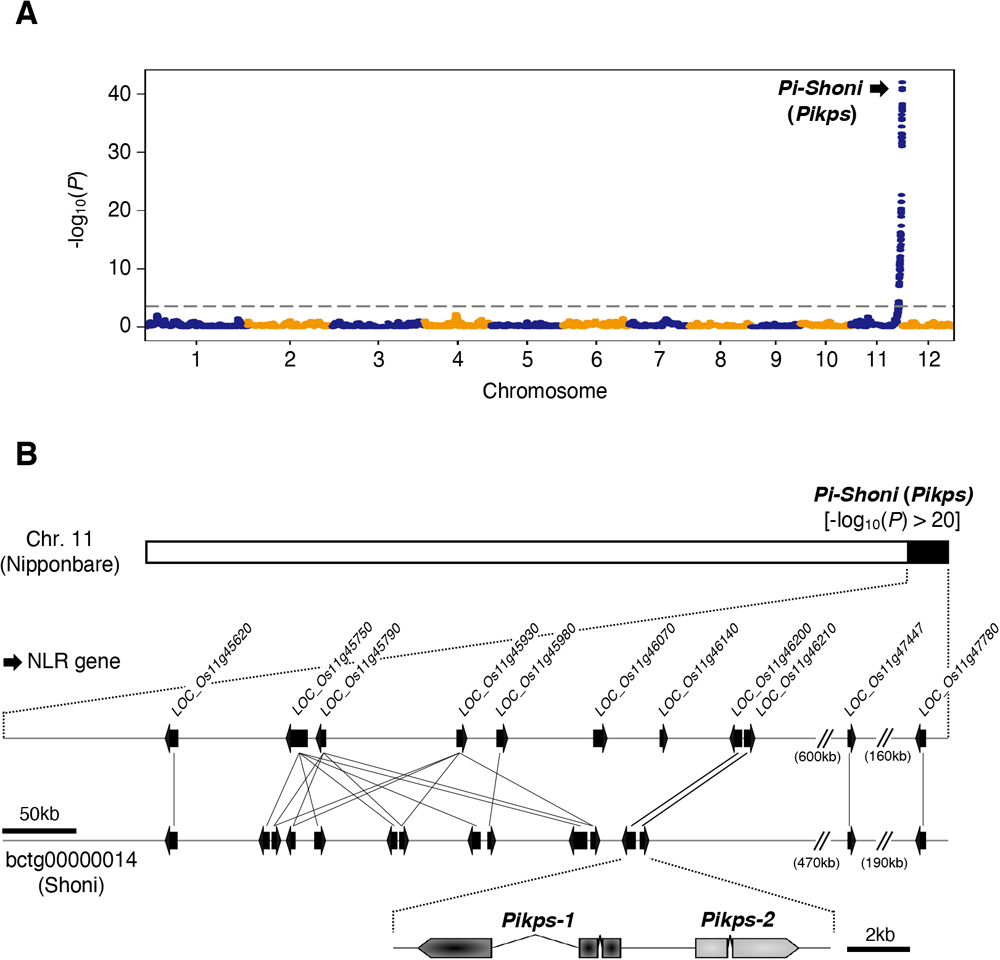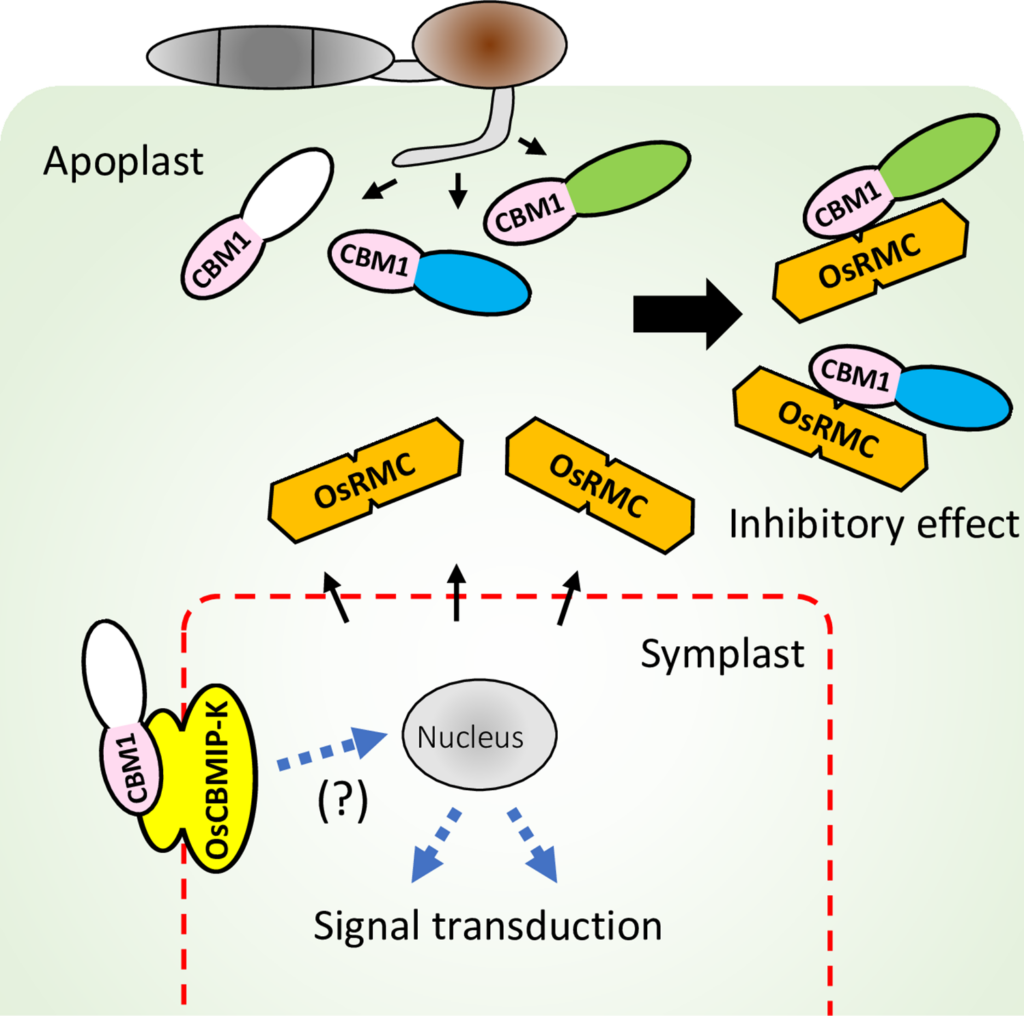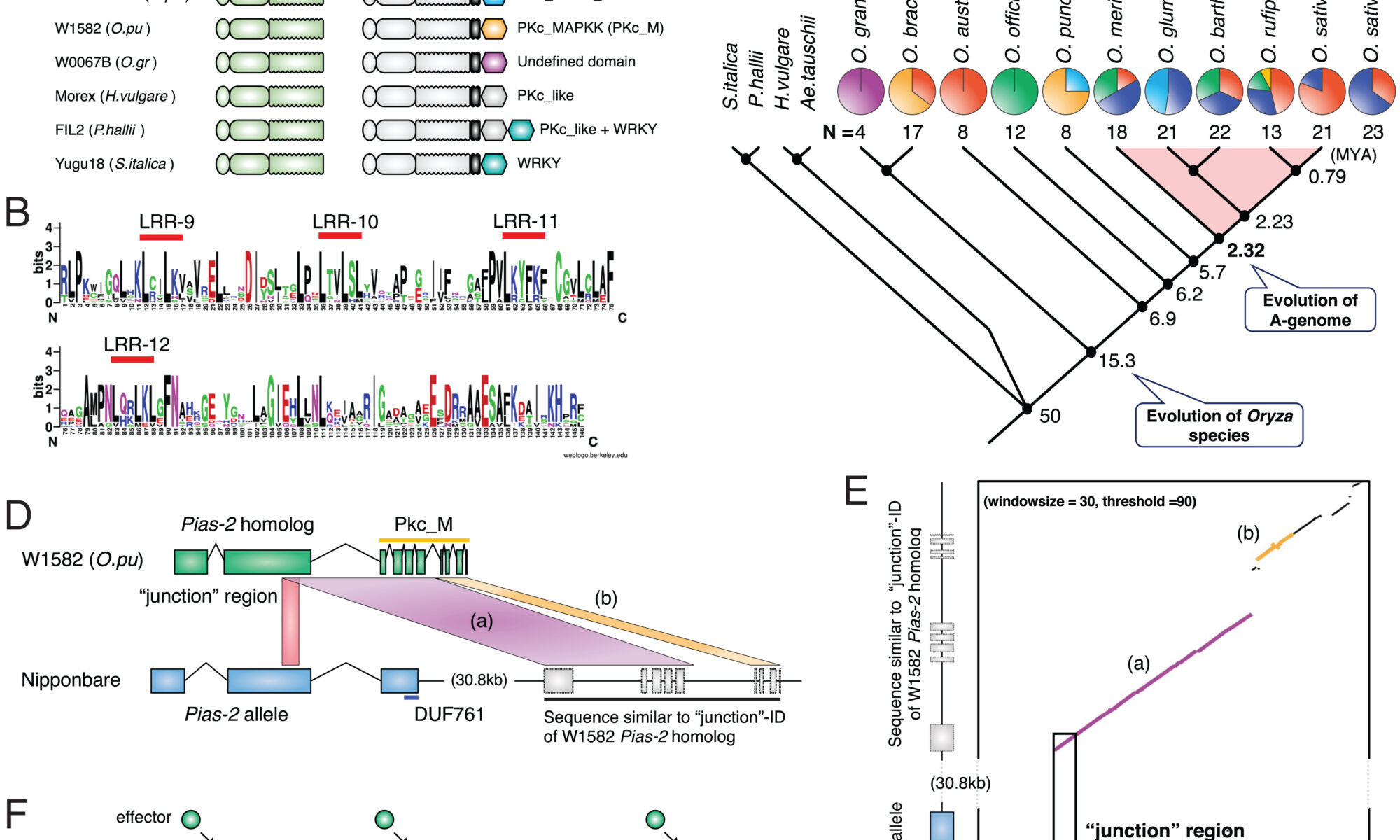This paper has been published in which Dr. Adachi is the corresponding author.
Adachi, H., Sakai, T., Harant, A., Pai, H., Honda, K., Toghani, A., Claeys, J., Duggan, C., Bozkurt, T. O., Wu, C., & Kamoun, S. (2023). An atypical NLR protein modulates the NRC immune receptor network in Nicotiana benthamiana. PLOS Genetics, 19(1), e1010500-. https://doi.org/10.1371/journal.pgen.1010500
Abstract
The NRC immune receptor network has evolved in asterid plants from a pair of linked genes into a genetically dispersed and phylogenetically structured network of sensor and helper NLR (nucleotide-binding domain and leucine-rich repeat-containing) proteins. In some species, such as the model plant Nicotiana benthamiana and other Solanaceae, the NRC (NLR-REQUIRED FOR CELL DEATH) network forms up to half of the NLRome, and NRCs are scattered throughout the genome in gene clusters of varying complexities. Here, we describe NRCX, an atypical member of the NRC family that lacks canonical features of these NLR helper proteins, such as a functional N-terminal MADA motif and the capacity to trigger autoimmunity. In contrast to other NRCs, systemic gene silencing of NRCX in N. benthamiana markedly impairs plant growth resulting in a dwarf phenotype. Remarkably, dwarfism of NRCX silenced plants is partially dependent on NRCX paralogs NRC2 and NRC3, but not NRC4. Despite its negative impact on plant growth when silenced systemically, spot gene silencing of NRCX in mature N. benthamiana leaves doesn’t result in visible cell death phenotypes. However, alteration of NRCX expression modulates the hypersensitive response mediated by NRC2 and NRC3 in a manner consistent with a negative role for NRCX in the NRC network. We conclude that NRCX is an atypical member of the NRC network that has evolved to contribute to the homeostasis of this genetically unlinked NLR network.
Author summary
Plants have an effective immune system to fight off diverse pathogens such as fungi, oomycetes, bacteria, viruses, nematodes and insects. In the first layer of their immune system, receptor proteins act to detect pathogens and activate the defense response. Plant genomes encode very large and diverse repertoires of immune receptors, some of which function in pairs or as complex receptor networks. However, the immune system can come at a cost for plants and inappropriate receptor activation results in growth suppression and autoimmunity. Here, we show that an atypical immune receptor gene functions as a modulator of the immune receptor network. This type of receptor gene evolved to maintain homeostasis of the immune system and balance fitness trade-offs between growth and immunity. Further understanding how plants regulate their immune receptor system should help guide breeding disease resistant crops with limited fitness penalties.

We propose that “Modulator NLR” contributes to NLR immune receptor network homeostasis during plant growth. A modulator NRCX has a similar sequence signature with helper MADA-CC-NLRs, but unlike helpers, NRCX lacks the functional MADA motif to execute cell response. NRCX modulates the NRC2/NRC3 subnetwork composed of multiple sensor NLRs and cell-surface receptor (left). Loss of function of NRCX leads to the enhanced hypersensitive response and dwarfism in N. benthamiana plants (right).








